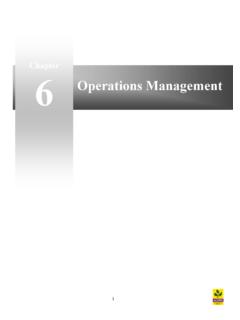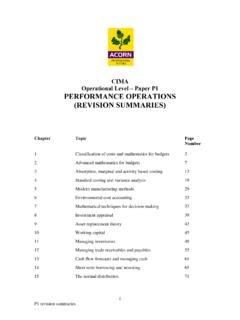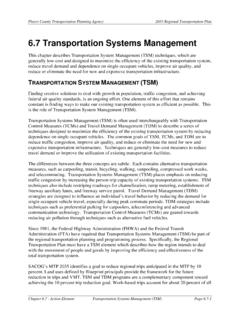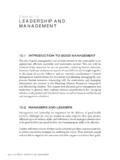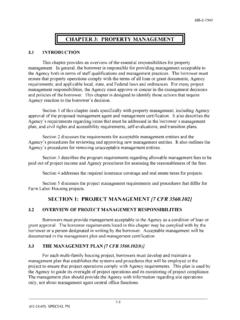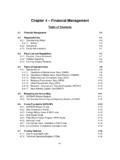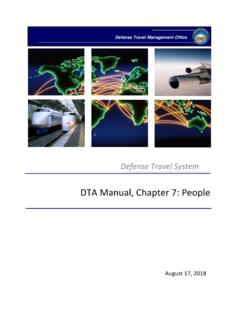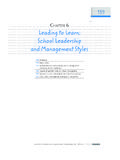Transcription of Chapter of Project Management Tools and Techniques 7
1 Chapter 7 Tools and Techniques of Project Management 1. Risk Management Risk is the chance or probability of something that may or may not occur; it is something which can be quantified (using standard deviation). Uncertainty is something, which cannot be predicted with statistical confidence, normally due to insufficient information. In a Project environment there is always a risk or chance that adverse conditions occur, which could cause the Project to fail, or fail to meet its planned objectives time, cost and quality. A Project manager or a Project board should consider the different tasks, activities and work to accomplish Project deliverables, and consider any risk that an actual outcome could differ to an expected outcome. The financial and non-financial effects of each risk should be well documented, each risk perhaps classified into groups for better understanding of its implications. Models such as PEST or SLEPT analysis and other derivatives help to analyse different types of risk social, legal, economic, political and technological risk.
2 Risk Management processes can also help to identify those risks that are controllable and uncontrollable, once each risk has been identified and the scale or impact of each clearly understood, appropriate risk Management strategies can be implemented in order to control each risk. This will be an on-going activity throughout the various stages of the Project . A process of managing risk 1. Risk committee set up to address risk issues identified regular risk audits, to identify and estimate the likelihood and consequences. 2. Risk register kept which documents: All identified risks ranked and prioritised'. Significance and consequence of each risk reported. Assigned responsibilities to individuals to manage different risks identified for greater accountability. Documentation of measures and actions to be taken for each risk, in the event that it does occur risk Management strategies. 3. Existing processes for risk Management reviewed and refined over time continuous improvement. 2. Risk Management strategies Retain the risk (Absorption) if the risk is small and won't effect the Project a great deal then do very little and live with it'.
3 Avoid the risk (Avoidance) take action to ensure the risk is prevented or avoided in some way contract clauses, abort contract etc, but this will cost money and some risks are unavoidable, therefore avoidance may not be feasible. Reduce the risk (Reduction) ensure a risk is minimised by effective control systems such as, employment agencies to supply staff temps' in the event that progress falls below what's expected. Transfer the risk (Transference) pass or transfer the risk to a third party, an underwriter' or insurer therefore bears the risk, however this could cost allot of money. Contain the risk (Containment) immediate action taken to safeguard any unwanted occurrence, such as more than enough funding or staff made available to prevent the situation occurring, or two alternative suppliers on stand by just in case. Contain means to control, lessen the intensity or hold in restraint, very similar to risk reduction. Scenario planning is about perceiving uncertainties identification of risks and the development of pre-emptive courses of action, if the event or scenario was to occur.
4 It is an attempt to build plausible views of a number of different possible futures for when operating in conditions of high uncertainty. Scenario planning is a powerful business tool . Scenario planning is not about predicting the future but exploring the future. If Management can be more aware of what could happen, they are more likely to be able to deal with it if it does. Using scenario planning can equip Management to think constructively about the future and to plan for it more precisely. It is about setting up systems for monitoring what actually does happen in such a way that Management are able to appreciate and respond effectively to changes that may evolve over time. Buffering (or slack) is the allowance of extra' cost, time or resources just in case' certain events or risks do occur. Buffering makes a provision for uncertainty in Project environments. Example Give examples of some risks identified for a Project to introduce a new computerised system? 3. The budgeting process A budget is a forecast or quantified plan of action.
5 A quantified financial plan of action which itemises a projects income and expenditure allocated a list of all planned income and expenses. Budgetary planning creates a budget as part of the planning process for the Project . Budgetary control compares the budgeted results as a yardstick' or target, in comparison to actual results, in order to quantify any variances or deviations from the Project plan. This process at regular intervals throughout a Project can be used to take control action and bring actual results in line with the plans. Budgets may help in authorising expenditure, communicating objectives and plans, controlling operations, coordinating activities, evaluating performance, planning and rewarding performance. Often reward systems involve comparison of actual with budgeted performance. (CIMA). The process of producing budgets A budget manual is prepared to give instructions, reporting lines, delegate responsibilities, communicate the timetabling and deadlines for submission of the different budgets.
6 A budget committee may be formed to coordinate and administrate the process of producing the different budgets. Budget committees help centrally control the process of budgets being produced, they will communicate with other departments to coordinate and consolidate the production of different budgets to be prepared. A budget officer (accountant) will often be appointed to assist the budget committee. The purpose of budgets P Planning R Resource utilisation (or responsibility accounting). I Integration or coordination M Motivation E Evaluation 4. Example Project budgets can be imposed using top-down (centralised) approaches Project board sets the budget, or using bottom-up (decentralised) approaches Project manager or Project team sets the budget. What are the advantages and disadvantages of each? 5. Work breakdown structure (WBS). The purpose of work breakdown structure (WBS) is to help plan effectively for a Project by breaking key tasks or activities down in to more manageable and smaller units of work.
7 WBS produces a detailed list of tasks to be performed for a Project , helping to deliver better costing, scheduling and resource planning for a Project . Cost breakdown structure (CBS) lists every item classified and its expenditure for the Project in order to get a more detailed estimate of cost or expenditure. Examples of how WBS or CBS can aid budgeting planning Staff hours for each task or activity assigned x staff hourly rates per hour Staff hours for each task or activity assigned x overhead rates per hour Equipment, financing or resources more accurately planned for given more detail of the tasks to undertake During a Project , financial control can be achieved by actual expenditure being tracked against each budget allocated for the different tasks assigned. Regular progress can be monitored using budget or time sheets, and control action taken if appropriate the process of exception reporting. The benefits of using WBS. Can be used to allocate and delegate responsibility to help accomplish different tasks or activities control through greater accountability.
8 Can help sequence and schedule the timing of different events to improve effectiveness of how time is allocated the most efficient sequence of accomplishing activities can be understood. Improves resource planning and the efficiency of how resources are consumed accurate forecasts for Project staffing to save cost. Can be used as a basis of financial exception reporting' actual v budget cost allowances, and also forecast more accurately the Project costs. Can be used for risk Management to identify risks, and used as an on- going process for monitoring risks for a Project . 6. Gantt Charts A time chart devised by Henry Gantt in 1917, an American engineer. A Gantt chart is a horizontal bar chart used for Project scheduling. Each activity or task is depicted as a block over time, actual performance is recorded in real time and compared to planned deadlines necessary for achieving completion. The use of Gantt Charts as a tool Can be used to plan time scale for a Project Can be used to estimate resources required Graphical illustration of a schedule of tasks to complete ideal wall chart for the office and easy to visualise and interpret at meetings Helps to plan, coordinate, and track specific tasks for a Project Good for small projects when the number of tasks or activities are small and not complex good for simple projects.
9 The example of a Gantt chart below illustrates the start date, end date and duration of each task, the illustration is for an IT Project . The arrow indicates in real time that the Project is at the beginning of week 18. No actual time bar has been completed for the last 3 activities because they have not started yet. Often communication can be improved by omitting different time lines between week 5-12 has been omitted, to reduce the length of the chart. This is only possible if you have no activities starting or completing during any time discontinuance(s) you present. Illustration of a Gantt chart Week number Week 0 1 2 3 4 13 14 15 16 17 18 19 20. Project activities Design Plan Actual Integration Plan Actual Testing Plan Going live Plan Training Plan 7. Critical path analysis (CPA) or network analysis Gantt charts are a poor time Management Tools when projects are lengthy and complex. There often exists in large projects a high interdependency between various tasks some activities cannot start, until others have been completed first, therefore many activities are interrelated.
10 Gantt charts in these circumstances are less desirable because they do not display or indicate interdependencies. Network (or critical path). analysis can display more logically the sequence and timing of each activity, they communicate interdependency and a more effective time Management tool for large and complex projects. The use of critical path analysis as a tool Good visual communication and planning tool for effective time Management . Displays clearly interdependent relationships that exist between the different activities or tasks to be completed. Arranges tasks or activities into an optimum sequence of events allowing a Project to be completed in the most efficient time possible. Elapsed time (or estimated time) to complete the Project can be calculated. Highlights those activities which are critical activities' those tasks which must be completed within their planned time, otherwise the elapsed time (or estimated time) of the Project will not be achieved. Enables more effective resource planning, resources can be diverted away from non-critical' to critical activities' staff could be moved from one task to another, should problems of overrunning occur on critical activities.

